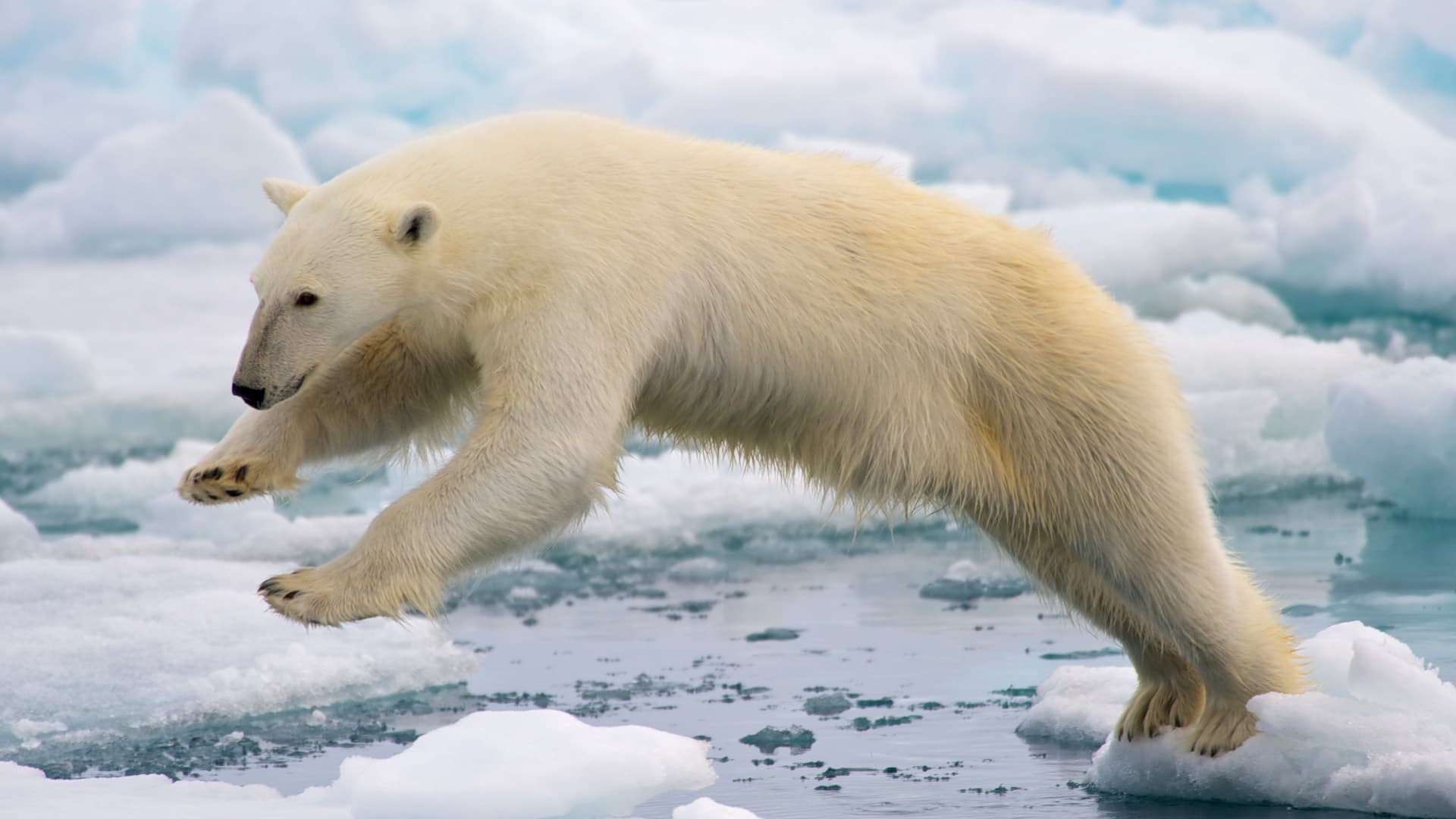Finding lunch on the ice
 Arturo de Frias Marques CC BY-SA 4.0
Arturo de Frias Marques CC BY-SA 4.0
Play this game to see how polar bears are affected by shrinking sea ice in the Arctic.
Ages 5+
(adult supervision)
15 mins
Part of:
Convex Seascape SurveyThis activity helps children understand how sea ice loss affects polar animals, particularly polar bears that depend on ice for hunting. Through physical movement and role-play, students experience first-hand how habitat changes impact an animal's ability to find food.
Preparation
Clear a large open space in the classroom or use the playground/hall
Place white paper "ice floes" across the floor with some space between them
Place the seal photos around the Arctic Ocean space
Use chalk or tape to delineate the Arctic Ocean area
Activity steps
Gather students and explain they are going to be polar bears hunting for food in the Arctic, showing a photo of a polar bear hunting. Tell students that they need to only walk across the ice floes to find the seals. (Note: polar bears can swim short distances, but longer distances take a lot of energy and can cause exhaustion.)
Select one or two students to be polar bears, with the rest of the class observing for the first round.
Explain the rules:
Polar bears must move from ice floe to ice floe
They can only "catch food" when standing on an ice floe
They must follow your start and stop signals
Round 1: Plenty of ice
Start with many ice floes spread across the area.
Have polar bears move from floe to floe, "hunting" for food.
When a bear finds a seal picture, they have found food.
Allow bears to hunt successfully for 1-2 minutes.
Round 2: Some ice loss
Pause the activity and remove about a third of the ice floes.
Tell students: "The ocean is warming, and some ice has melted".
Restart the activity with fewer ice floes.
Ask bears to continue hunting for 1-2 minutes.
Round 3: Significant ice loss
Pause again and remove half of the remaining ice floes.
Tell students: "The ocean has gotten even warmer, and more ice has melted".
Restart the activity with very few ice floes.
Have bears try to continue hunting with limited ice for 1-2 minutes.
Role rotation (optional)
If time allows, rotate roles so more students can experience being polar bears
Discussion Points
Gather students in a circle for a group discussion.
Ask polar bear players:
How did it feel when there was plenty of ice?
How did it feel when there was less ice?
Was it harder to find food when ice was melting?
Ask observers:
What did you notice about how the polar bears moved when there was less ice?
Did the polar bears have the same chance to find food each time?
Connect to climate change:
The ice is melting in the Arctic because the ocean is getting warmer.
When ice melts, polar bears have a harder time finding food.
This change is happening because of warming caused by people.
Safety guidance
Ensure the activity area is clear of obstacles and has sufficient space for movement
Remind students to move carefully and be aware of others
Establish a "freeze" signal to immediately stop activity if needed
Brought to you by
